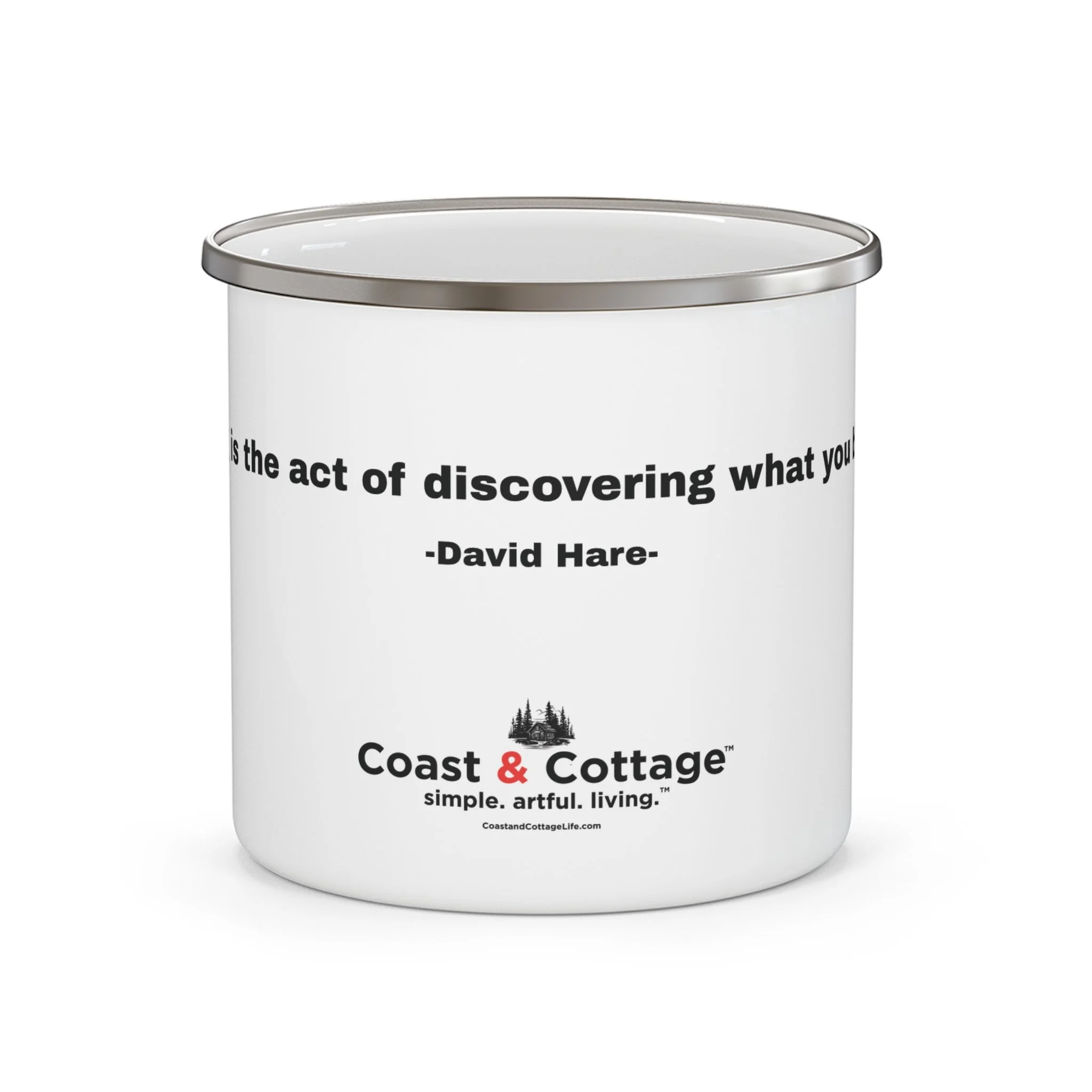Journaling
“Writing is the act of discovering what you believe.”
— David Hare
The history of journaling is as old as the written word itself. Across cultures and centuries, people have used journals—whether etched into clay tablets, inked on parchment, or typed into digital apps—as a tool for reflection, record-keeping, and personal expression.
Henry David Thoreau (1817–1862): His Walden was based largely on his journals, weaving philosophy with nature observation.
Galen Leather Co.
Elevate your journaling experience with our handcrafted leather wrap journal covers. Inspired by the spirit of old-world explorers and timeless poets, these covers add a touch of ritual and romance to your everyday writing. Made from rich, full-grain leather that softens and develops character over time, each cover becomes a living part of your story—transforming simple notes into cherished keepsakes.
WHY
Journaling is one of the simplest, most effective practices for improving mental clarity, emotional resilience, and self-awareness. Here’s why you should journal—whether daily, weekly, or whenever you need to reset:
1. Clear Your Mind
Journaling helps declutter your thoughts. Writing things down externalizes mental noise—worries, tasks, looping thoughts—so your brain doesn’t have to juggle it all.
2. Process Emotions
You don’t have to be eloquent to benefit emotionally. Writing about how you feel gives you a safe outlet to explore anger, sadness, joy, fear—whatever’s real—without judgment.
3. See Patterns
With regular entries, you start noticing patterns in your moods, behaviors, and triggers. That self-knowledge can lead to smarter choices and better boundaries.
4. Make Better Decisions
Putting thoughts into words slows you down just enough to reflect instead of react. It’s easier to weigh pros and cons or untangle complex situations when they’re on paper.
5. Fuel Creativity
Freewriting, story ideas, or just morning pages can jump-start creativity. Many writers, musicians, and entrepreneurs use journaling as a tool to break through mental blocks.
6. Track Growth
Over time, your journal becomes a record of who you were and how far you’ve come. What once felt overwhelming may now seem small in hindsight.
7. Set and Reflect on Goals
Journaling gives you space to articulate what you want—and reflect on how you’re progressing toward it. It keeps goals visible and accountable.
8. Improve Mental Health
Countless studies support journaling’s impact on reducing anxiety, managing depression, and improving emotional regulation. It’s not a cure-all, but it’s a low-cost, low-barrier support tool.
9. Sleep Better
Brain buzzing at night? Journaling before bed, especially about things you’re grateful for or worried about, can help you unwind and get deeper sleep.
10. No One’s Watching
It’s one of the rare places in life where you can be unfiltered, inconsistent, messy, honest, and still grow. There are no rules—just space to be fully yourself.
The Traveler’s Notebook
Love capturing your travel memories on the road? Protect your journal in style with our Handmade Leather Traveler’s Notebook Covers. Made from premium vegetable-tanned, full-grain leather in deep, earthy hues, each cover is built to journey with you—growing more beautiful with every mile. As it develops a rich, unique patina, it becomes more than just a cover—it becomes part of your story. Because your memories deserve more than paper—they deserve something lasting.
HISTORY
1. Ancient Beginnings
Mesopotamia (c. 2500 BCE): Some of the earliest written records—on clay tablets—were transactional, but others recorded events or celestial observations, showing early signs of personal or observational journaling.
Ancient Egypt & China: Scholars, astronomers, and spiritual leaders kept daily records, which often blurred the line between calendar, diary, and scientific log.
Marcus Aurelius (121–180 CE): His Meditations—originally private reflections—are perhaps one of the most famous early examples of philosophical journaling.
2. Medieval Monks & Spiritual Journals
Middle Ages (5th–15th century): Christian monks kept journals for spiritual examination. These “soul records” were less about daily life and more about faith, sin, and personal progress.
Islamic Golden Age: Scholars and physicians like Avicenna kept extensive notebooks to organize their thoughts, findings, and spiritual reflections.
3. Renaissance to Enlightenment
The invention of the printing press (15th century) made paper more accessible.
Leonardo da Vinci (1452–1519): Filled thousands of pages with sketches, inventions, observations, and inner thoughts—an unparalleled blend of art and introspection.
Travel journals and ship logs became common, especially among explorers like Christopher Columbus and Captain Cook.
The idea of the personal diary as a tool for self-reflection gained ground during this period.
4. 18th–19th Century: The Rise of the Personal Diary
Journals became a popular pastime among the literate, especially in Europe and North America.
Famous examples include:
Samuel Pepys (1633–1703): Chronicled daily life in 17th-century London, including the Great Fire.
Anne Lister (1791–1840): Wrote coded diaries documenting her business dealings and lesbian relationships—far ahead of her time.
Henry David Thoreau (1817–1862): His Walden was based largely on his journals, weaving philosophy with nature observation.
5. 20th Century: Therapy and Art
Journaling became recognized in psychology as a therapeutic tool, especially with the rise of psychoanalysis.
Artists and writers, including Frida Kahlo, Virginia Woolf, and Sylvia Plath, used journals to process trauma, creativity, and identity.
War diaries, such as Anne Frank’s, became powerful records of personal experience in extreme circumstances.
6. Digital Age (1990s–Present)
Blogs emerged in the late 1990s as public-facing journals.
Digital journaling apps (like Day One, Journey, Notion) now blend multimedia, tags, and voice dictation for more personalized reflection.
Journaling is now often promoted in wellness culture—linked to mindfulness, gratitude, and habit-tracking.
Field Notes
Journal field notes are handwritten or typed observations recorded in the moment, often during research, travel, or time spent in nature. They're typically used by scientists, naturalists, artists, travelers, or students to document real-world experiences, sights, and reflections as they happen.
What Journal Field Notes Typically Include:
Date, time, and location
Environmental conditions (weather, light, sound)
Detailed observations of surroundings, people, or wildlife
Sketches, maps, or diagrams
Measurements or data
Personal impressions or questions
Quotes or snippets of conversation
Who Uses Field Notes—and Why
Scientists (biologists, anthropologists): to record objective data and contextual notes in the field
Travelers and explorers: to capture raw impressions, sketches, and encounters
Artists and writers: to log inspiration, scenery, or mood for later creative use
Students and researchers: to support research with firsthand observations
Difference Between a Journal and Field Notes
A journal is often more personal and reflective.
Field notes are more observational and detail-driven—but the two often overlap, especially in travel or nature journaling.




